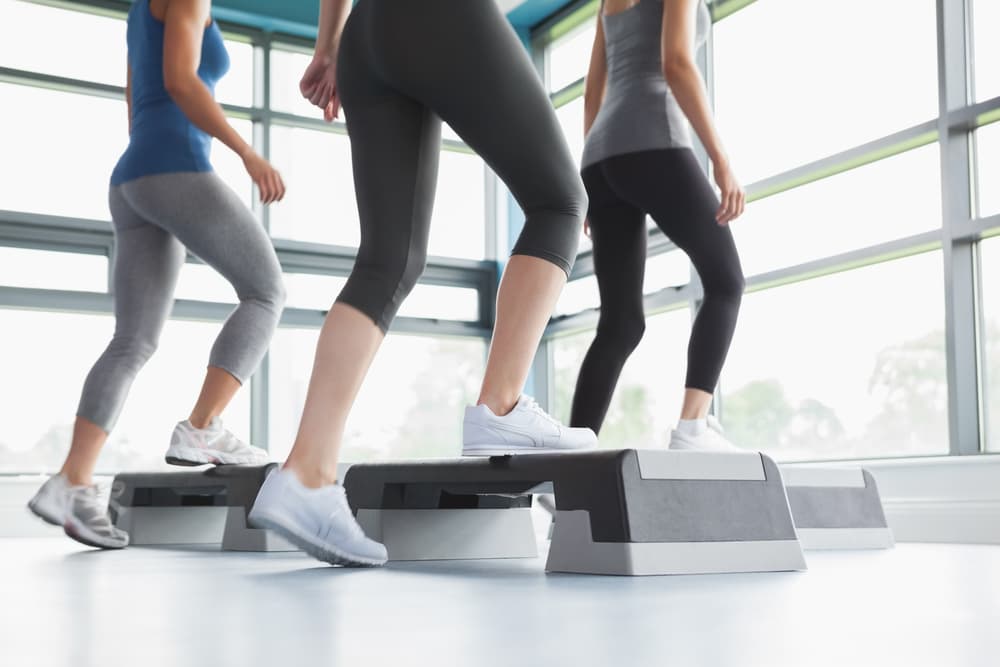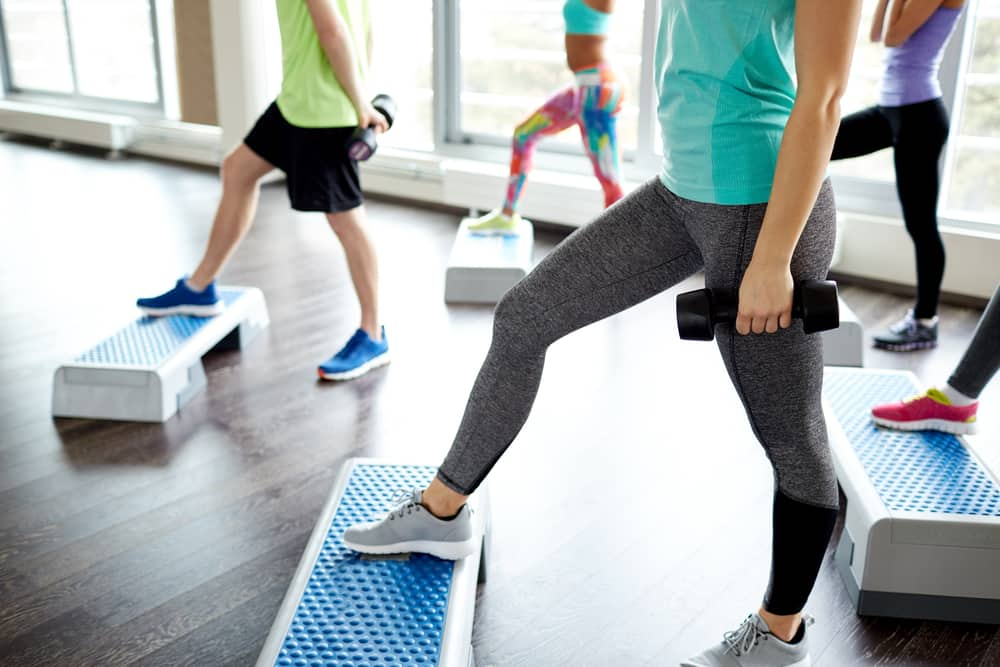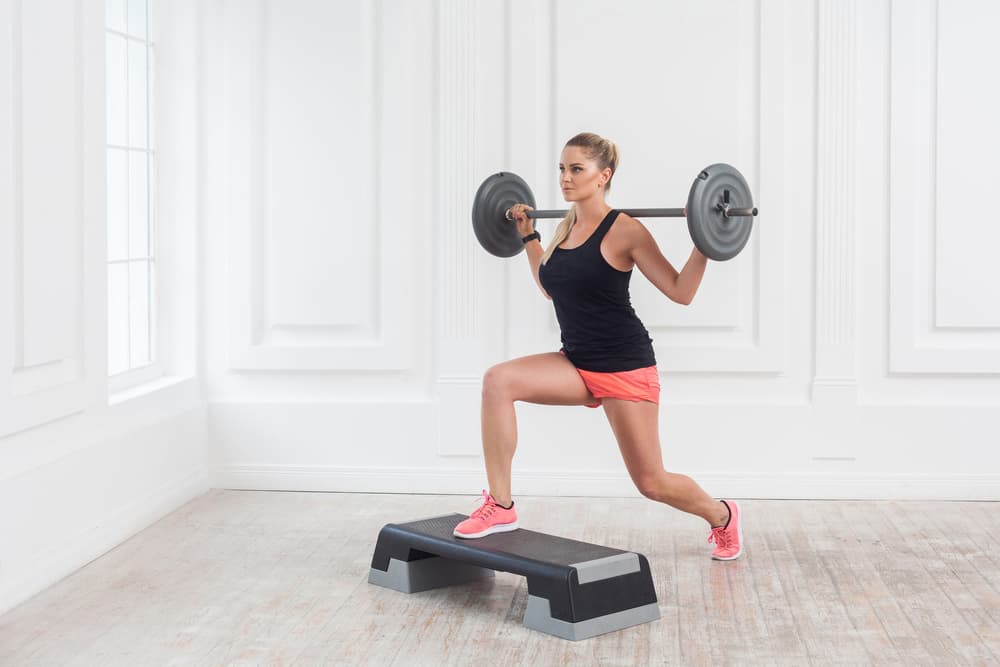Fitness beginners like doing the step-up exercise. This move couldn’t be easier: step up, then step down. But there’s more to it that makes it an excellent workout addition.
For one thing, it’s doable yet efficient in targeting multiple muscles in one go. And in turn, you get several step-up exercise benefits.
You can safely do this at home any time, too. Plus, you can easily mix it with other movements or equipment to match your progressing fitness level. Here are the other essentials you need to know.
What is a Step-Up?
A step-up is a unilateral exercise where you step one leg on an elevated surface. You then press through that lead leg to bring the other one up.
Equipment
The elevated surface can be as simple as a sturdy chair or staircase or specialised like a plyometrics box or aerobic stepper. No matter your equipment choice, keep in mind that you need to step at the centre, not the edge, to ensure balance.
Make sure to avoid stepping on cushioned chairs, too, as these are unstable. Also, you can always start on an ankle-height box then progress to a knee-level chair when ready.
Ideally, use an adjustable aerobic stepper for step-up exercise variety.
Target Muscles
The leg muscles are the main focus of step-ups, particularly your glutes, quads and upper hamstrings. Your abdominal muscles also keep your body stable during the exercise.
What are the Benefits of Step-Up Exercise?
The best thing about the step-up is that virtually anyone can do it. Its benefits also help us perform daily tasks better.
Here are some of them:
- It builds up glute strength for walking, running or cycling. Step-ups target all three types of gluteal muscles, which we need for doing forward movements.
- It strengthens hill or stair-climbing ability. When you step up and down, your quads and knees become stronger. You need both to make climbing stairs or slopes easy.
- It improves body and muscle balance. As a unilateral leg exercise, step-ups improve lower body symmetry. Specifically, these prevent your dominant muscles from doing all the work. As a result, you also boost your squat or deadlift load, as well as running or jumping power.
- It burns calories. The step-up is a cardiovascular exercise, making it an excellent add-on to achieve a healthier weight. However, keep in mind that the calories burned with step aerobics depend on body weight and exercise intensity.

How Do I Perform the Step-Up Exercise?
The first thing you need to do is find a sturdy box, bench or chair. Either of these options should allow you to bend your knee at a 90-degree angle.
Make sure the step height is comfortable and matches your fitness level, too. Here are the steps from beginner to advanced.
Beginner Level
- Place your right foot onto the centre of your aerobic stepper (chair, box or bench).
- Then, press your right heel against the surface as you bring your left foot up.
- Step your right foot down, then your left foot to return to starting position and make one rep.
- Repeat this move 15 times to make one set. Try doing two more sets after that.
Intermediate Level
- Place your right foot onto the centre of your aerobic stepper (chair, box or bench).
- Then, press your right heel against the surface as you bring your left foot up. But, instead of standing with both legs down, keep your left knee up and bent at 90 degrees.
- Next, bend your right knee as you bring your left foot down to the floor, followed by your other foot.
- Repeat this move 15 times on each leg. Try doing a total of three sets.
Advanced Level
Once you are comfortable doing both beginner and intermediate step-ups, try doing it with a kettlebell or pair of dumbbells.
Start with light weights, though, between 1 and 3kg. When strong enough, you can increase your load from 4 to 9kg.
How Do I Maintain the Proper Step-Up Exercise Form?
- Choose the right stepper or bench. Your knee should bend 90 degrees when you step up. You should feel a stretch at the inner side of your groin and the back of your hamstrings.
- Finish one set before switching legs. It’s hard to maintain the correct form when you alternately work your legs with each repetition.
- Lower your body slowly. Slamming down your foot too quickly is no good for your form or knee joint. So, focus on how you step up and down. Perform controlled rather than high-impact motions to avoid the risk of injury, too.

What are Some Step-Up Exercise Variations?
Ready to spice things up a bit? Try these variations to target other muscles as you step up and down.
Lateral Step-Up
Instead of stepping straight forward and up, let’s do it at an angle this time. Stand at the left side of your stepper, then step your right leg up, followed by your left foot.
Make sure to choose a stepper wide enough for these sideward steps. This move targets your inner thigh muscles.
High Box Step-Up
This step-up exercise variation requires a box or bench that’s higher than your usual stepping surface. The aim here is to boost your range of motion and heart rate.
Try performing this move for ten repetitions on each leg, with your arms raised forward.
Weighted Step-Up
To do this, hold a dumbbell in each hand, then follow the same steps for beginner step-ups. Keep your hands to your sides while doing this variation.
Work on the same leg for ten repetitions before switching. This move is perfect if you’re into slow, muscle-building exercises.
You can also do the weighted step-up while holding a kettlebell to your chest. We call this variation the goblet step-up exercise.

Barbell Step-Up
If you prefer lifting heavier weights, though, try this variation. Start by positioning the barbell behind your head and neck, resting it on your shoulders.
It’s a more challenging move but better than lifting heavier dumbbells and hurting your forearms in the process. Remember to use a lower stepper for this, though, to keep your balance.
Explosive Step-Up
This variation is ideal for building up power and for athletes who need explosiveness, like sprinters and basketball players. Start with your right foot on a knee-height bench.
Next, lean forward, step up quickly and propel yourself up using your right leg. Land on your right foot softly before stepping back down with your left foot.
Level up this movement pattern by jumping higher or using a higher box height.
Should You Start Doing the Step-Up Exercise?
Step-ups are for everyone. However, if you have knee, ankle or hip issues, it’s best to consult your doctor before doing this simple exercise.
For beginners, master the basics first and start with unweighted step-ups. Then increase your step-up speed next or add more sets to your exercise routine once ready.
Now, get to stepping, build up lower body strength and start gaining those rewards!
- What Are the Advantages and Disadvantages of Folding Treadmills? - 11 March 2025
- Can You Use a Massage Gun When Pregnant? - 10 March 2025
- What is the Best Pre-Run Food? - 6 March 2025
